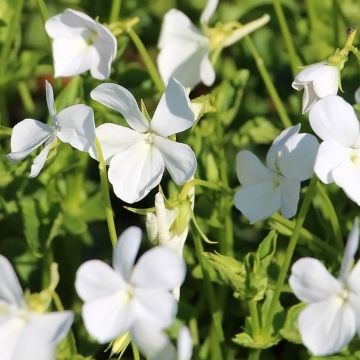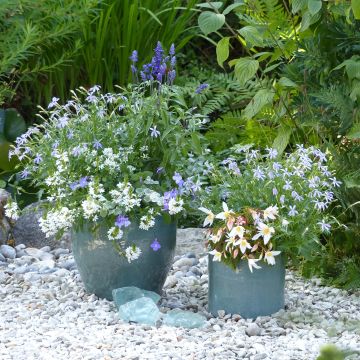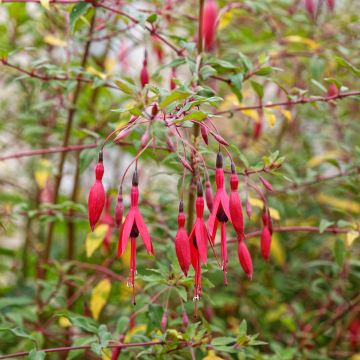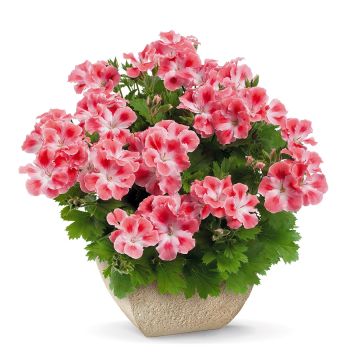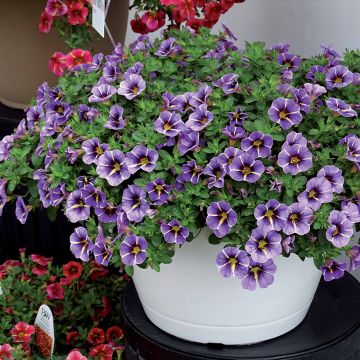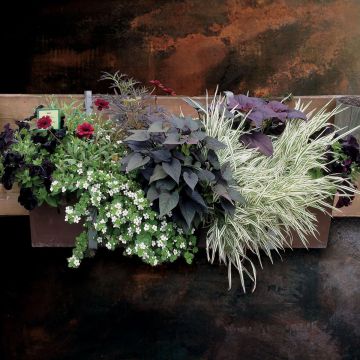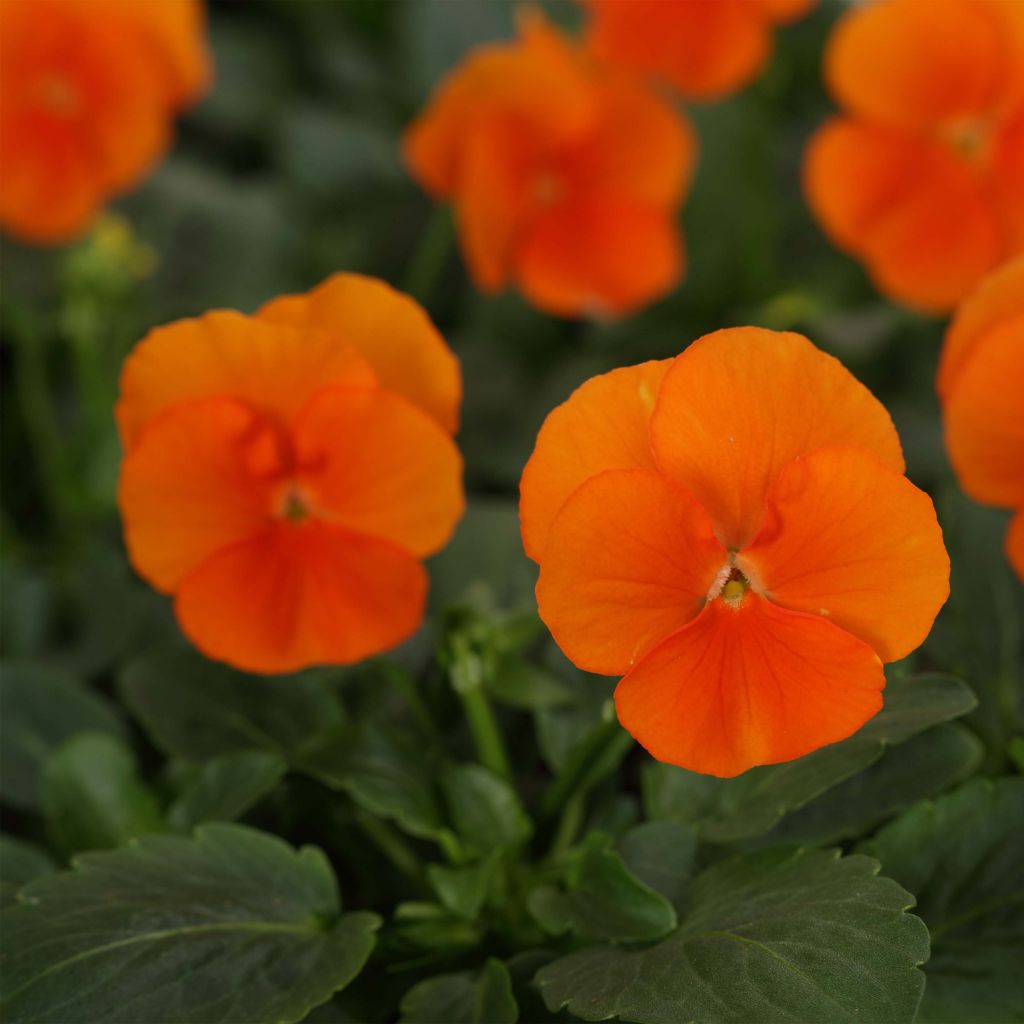

Viola Sorbet XP Deep Orange - Viola cornuta
Viola Sorbet XP Deep Orange - Viola cornuta
Viola cornuta Sorbet Xp Deep Orange
Horned Pansy, Horned Violet
This plant carries a 6 months recovery warranty
More information
We guarantee the quality of our plants for a full growing cycle, and will replace at our expense any plant that fails to recover under normal climatic and planting conditions.
From €5.90 for pickup delivery and €6.90 for home delivery
Express home delivery from €8.90.
From €5.90 for pickup delivery and €6.90 for home delivery
Express home delivery from €8.90.
Does this plant fit my garden?
Set up your Plantfit profile →
Description
The flowers of the deeply nasturtium-orange Viola cornuta Sorbet XP 'Deep Orange' are unusually vivid, abundantly covering its dark green evergreen foliage in spring, and again in autumn. This colorful horned violet produces small, vigorous compact clumps. It is an easy-to-grow biennial that can be used to create flamboyant borders as well as sumptuous pots or containers. Combine it with the blue or white flowers of forget-me-nots for a stunning effect.
Belonging to the Violaceae family, the horned violet, which grows wild in the Pyrenees, has given rise to numerous hybrids. The latest generation varierty Sorbet XP 'Deep Orange', is a remarkable little plant, bushy, spreading, and compact, 10 to 15 cm (5.9 in) tall when in bloom, with beautiful dark green, crenated, oval, evergreen leaves. Flowering starts early in spring, slows down a bit in summer, depending on the climate, then picks up again from late summer until the onset of winter. The flowers of this violet are an unmistakable orange, tinged with a slightly lighter mandarin-orange are a superb, almost pure colour. They resemble those of small pansies but their petals are arranged differently. The two upper petals are erect, the other three are inclined downwards. It spreads quite quickly thanks to its root system and also self-seeds easily in the garden.
Horned violets are intended for low beds and borders but also pots and window boxes, where they can be used to create beautiful color combinations on their own, or with other plants that flower in spring and summer (forget-me-nots, dwarf daffodils, daisies, primroses, tulips, summer and autumn asters, etc.). The flowers of horned violets are edible, so do not hesitate to decorate your plates with one or two flowers, or even sprinkle on your salads to give them a splash of colour.
Note: Please be aware that our young plant plugs are professional products reserved for experienced gardeners: upon receipt, transplant them as soon as possible, into containers, flowerpots, or directly into flowerbeds.
Report an error about the product description
Viola Sorbet XP Deep Orange - Viola cornuta in pictures
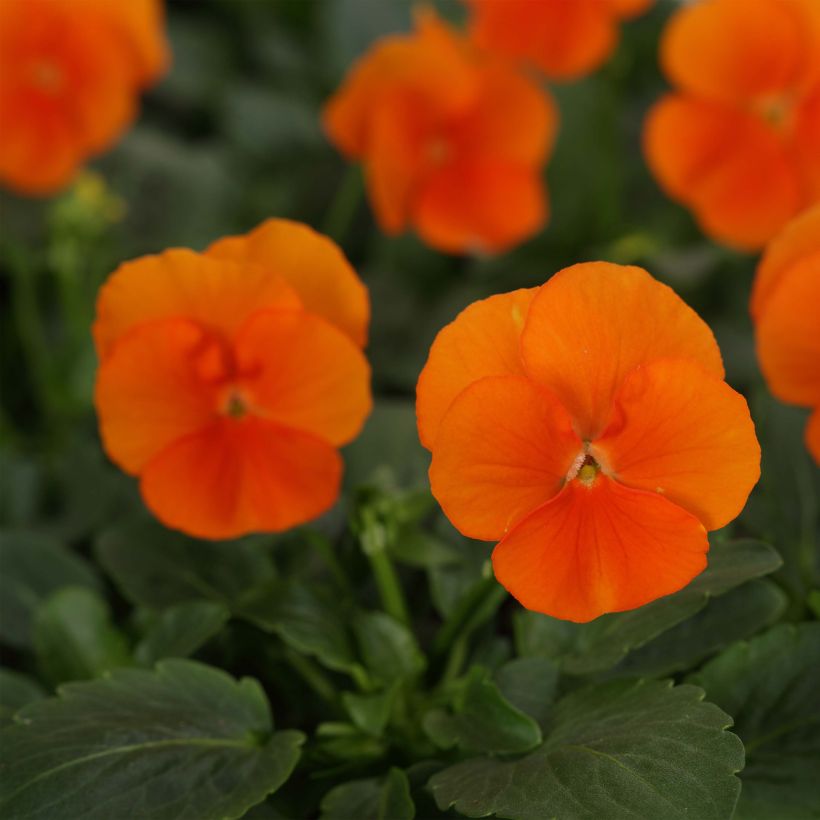

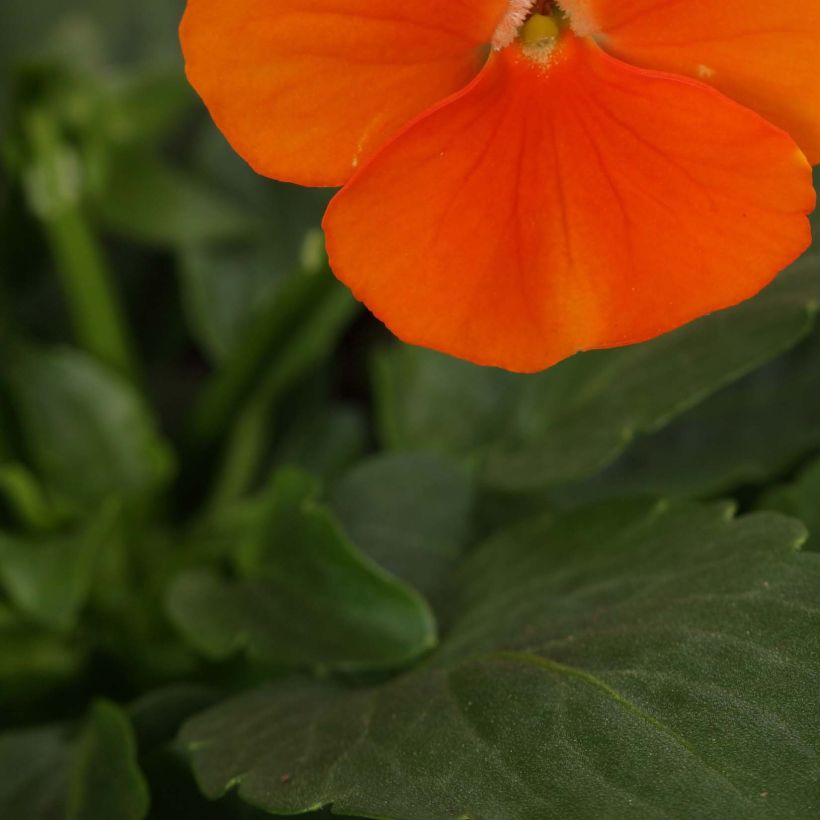

Flowering
Foliage
Plant habit
Botanical data
Viola
cornuta
Sorbet Xp Deep Orange
Violaceae
Horned Pansy, Horned Violet
Cultivar or hybrid
Other Pansies and violas
Planting and care
Horned violets thrive in a light, humus-rich soil, moist but well-drained as they dislike excessive moisture in winter. In heavy soil, add a little sand to improve the drainage.
Plant them in a sunny, but not over-hot location, or in light shade.
Fast-growing and free-flowering, they are nutrient-demanding plants. Feed them with a liquid feed once or twice a week during the growth period. Water regularly but not excessively. Deadhead to encourage flowering.
Planting period
Intended location
Care
-
, onOrder confirmed
Reply from on Promesse de fleurs
Plug plants - Annuals
Haven't found what you were looking for?
Hardiness is the lowest winter temperature a plant can endure without suffering serious damage or even dying. However, hardiness is affected by location (a sheltered area, such as a patio), protection (winter cover) and soil type (hardiness is improved by well-drained soil).

Photo Sharing Terms & Conditions
In order to encourage gardeners to interact and share their experiences, Promesse de fleurs offers various media enabling content to be uploaded onto its Site - in particular via the ‘Photo sharing’ module.
The User agrees to refrain from:
- Posting any content that is illegal, prejudicial, insulting, racist, inciteful to hatred, revisionist, contrary to public decency, that infringes on privacy or on the privacy rights of third parties, in particular the publicity rights of persons and goods, intellectual property rights, or the right to privacy.
- Submitting content on behalf of a third party;
- Impersonate the identity of a third party and/or publish any personal information about a third party;
In general, the User undertakes to refrain from any unethical behaviour.
All Content (in particular text, comments, files, images, photos, videos, creative works, etc.), which may be subject to property or intellectual property rights, image or other private rights, shall remain the property of the User, subject to the limited rights granted by the terms of the licence granted by Promesse de fleurs as stated below. Users are at liberty to publish or not to publish such Content on the Site, notably via the ‘Photo Sharing’ facility, and accept that this Content shall be made public and freely accessible, notably on the Internet.
Users further acknowledge, undertake to have ,and guarantee that they hold all necessary rights and permissions to publish such material on the Site, in particular with regard to the legislation in force pertaining to any privacy, property, intellectual property, image, or contractual rights, or rights of any other nature. By publishing such Content on the Site, Users acknowledge accepting full liability as publishers of the Content within the meaning of the law, and grant Promesse de fleurs, free of charge, an inclusive, worldwide licence for the said Content for the entire duration of its publication, including all reproduction, representation, up/downloading, displaying, performing, transmission, and storage rights.
Users also grant permission for their name to be linked to the Content and accept that this link may not always be made available.
By engaging in posting material, Users consent to their Content becoming automatically accessible on the Internet, in particular on other sites and/or blogs and/or web pages of the Promesse de fleurs site, including in particular social pages and the Promesse de fleurs catalogue.
Users may secure the removal of entrusted content free of charge by issuing a simple request via our contact form.
The flowering period indicated on our website applies to countries and regions located in USDA zone 8 (France, the United Kingdom, Ireland, the Netherlands, etc.)
It will vary according to where you live:
- In zones 9 to 10 (Italy, Spain, Greece, etc.), flowering will occur about 2 to 4 weeks earlier.
- In zones 6 to 7 (Germany, Poland, Slovenia, and lower mountainous regions), flowering will be delayed by 2 to 3 weeks.
- In zone 5 (Central Europe, Scandinavia), blooming will be delayed by 3 to 5 weeks.
In temperate climates, pruning of spring-flowering shrubs (forsythia, spireas, etc.) should be done just after flowering.
Pruning of summer-flowering shrubs (Indian Lilac, Perovskia, etc.) can be done in winter or spring.
In cold regions as well as with frost-sensitive plants, avoid pruning too early when severe frosts may still occur.
The planting period indicated on our website applies to countries and regions located in USDA zone 8 (France, United Kingdom, Ireland, Netherlands).
It will vary according to where you live:
- In Mediterranean zones (Marseille, Madrid, Milan, etc.), autumn and winter are the best planting periods.
- In continental zones (Strasbourg, Munich, Vienna, etc.), delay planting by 2 to 3 weeks in spring and bring it forward by 2 to 4 weeks in autumn.
- In mountainous regions (the Alps, Pyrenees, Carpathians, etc.), it is best to plant in late spring (May-June) or late summer (August-September).
The harvesting period indicated on our website applies to countries and regions in USDA zone 8 (France, England, Ireland, the Netherlands).
In colder areas (Scandinavia, Poland, Austria...) fruit and vegetable harvests are likely to be delayed by 3-4 weeks.
In warmer areas (Italy, Spain, Greece, etc.), harvesting will probably take place earlier, depending on weather conditions.
The sowing periods indicated on our website apply to countries and regions within USDA Zone 8 (France, UK, Ireland, Netherlands).
In colder areas (Scandinavia, Poland, Austria...), delay any outdoor sowing by 3-4 weeks, or sow under glass.
In warmer climes (Italy, Spain, Greece, etc.), bring outdoor sowing forward by a few weeks.

































